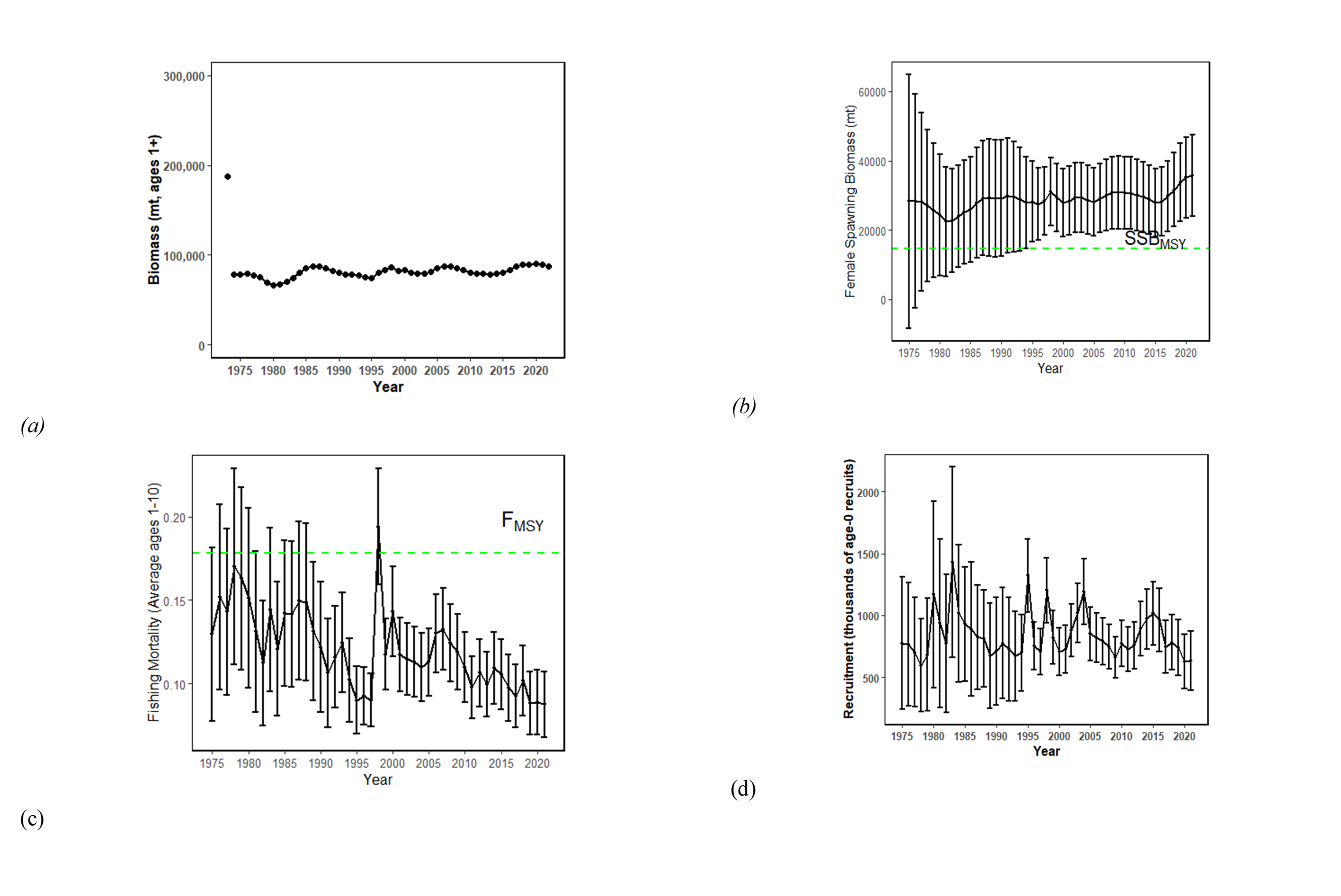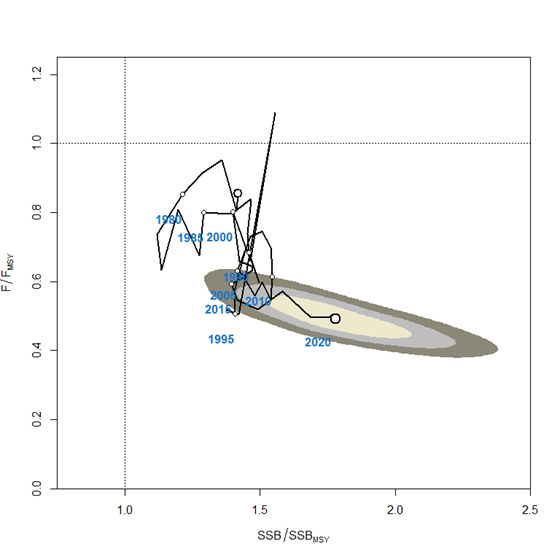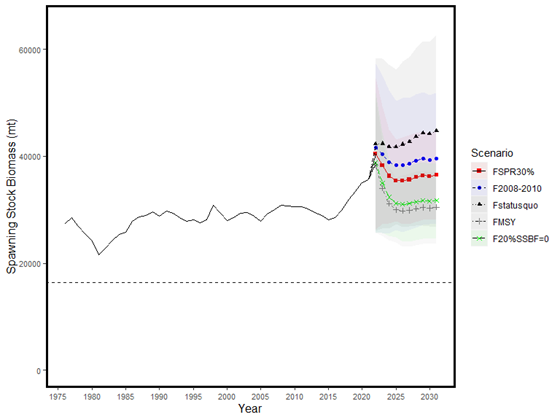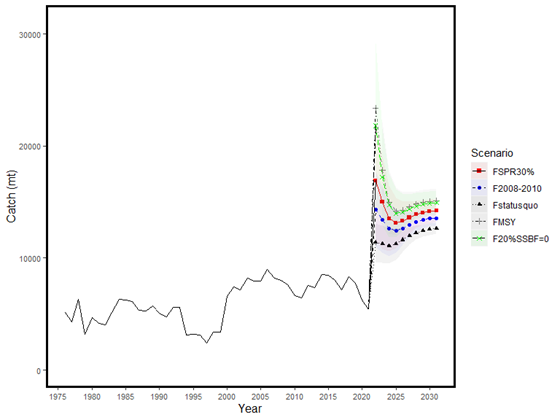Stock Status and Conservation Information
(From ISC23 Plenary Report)
Western and Central North Pacific Swordfish
![]() Click here to see the ISC22 stock status and conservation information.
Click here to see the ISC22 stock status and conservation information.
Stock Status
Estimates of population biomass fluctuated around an average of 80,800 t during the 1975-2021 period and was estimated to be 88,800 t in 2021 (Figure 1a). Initial estimates of female spawning stock biomass (SSB) averaged around 27,600 t in the late 1970s. SSB was at its highest level of 35,778 t in 2021 and was at its minimum of 22,415 t in 1981. Overall, spawning stock biomass has been relatively stable for the entirety of the assessment period (Figure 1b). Estimated F (arithmetic average of F for ages 1 – 10) decreased from 0.17 yr-1 in 1978 to a minimum of 0.09 yr-1 in 2021 (Figure 1c). It averaged roughly F=0.09 yr-1 during 2019-2021 or about 51% of FMSY with a relative fishing mortality of F/FMSY = 0.49 in 2021. Fishing mortality has been below FMSY since the beginning of the assessment time period and has had a declining trend with the exception of a high peak in 1998 coinciding with high catch by the U.S. longline fleet. Recruitment (age-0 fish) estimates averaged approximately 838,000 individuals during the 1975-2021 period. While the overall pattern of recruitment varied, there was no apparent trend in recruitment strength over time (Figure 1d). Overall, total annual catch is declining, CPUE is increasing, and recruitment is relatively stable.

WCPFC16 established a limit reference point for the exploitation rate of NPO SWO of FMSY. SSB
- Female spawning stock biomass was estimated to be 35,778 mt in 2021, with a relative SSB ratio of SSB/SSBMSY = 2.18 in 2021;
- Estimated F (arithmetic average of F for ages 1 – 10) averaged roughly F=0.09 yr-1 during 2019-2021 with a relative fishing mortality of F/FMSY = 0.49 in 2021; and
- Relative to MSY-based reference points, overfishing is very likely not occurring (>99% probability) and the NPO SWO stock is very likely not overfished (>99% probability, Figure 2).
Based on these findings, the following information on the status of the NPO SWO stock is provided by the ISC23 Plenary:

Conservation Information
Projections started in 2022 and continued through 2031 under five levels of fishing mortality. The five fishing mortality stock projection scenarios were: (1) F at 20%SSB(F=0) which was calculated from the mean dynamic SSB in the most recent five years, (2) F(2008-2010) which are the reference years for the proposed CMM for NPO SWO, (3) FLow at F30%SPR, (4) FMSY, and (5) F status quo (average F during 2019-2021). Results show the projected female spawning stock biomass and the catch biomass under each of the scenarios (Table 1; Figure 3, Figure 4).



Based on these future projections, the following conservation information for NPO SWO is provided by the ISC23 Plenary:
- The NPO SWO stock has produced annual yields of around 11,500 mt per year since 2016, or about 2/3 of the MSY catch amount;
- NPO SWO stock status is positive with no evidence of F above FMSY or substantial depletion of spawning potential (Figure 2); and
- It was also noted that retrospective analyses show that the assessment model appears to underestimate spawning potential in recent years.
Special Comments
The lack of sex-specific size data and the simplified treatment of the spatial structure of swordfish population dynamics remained as two important sources of uncertainty for improving future assessments.